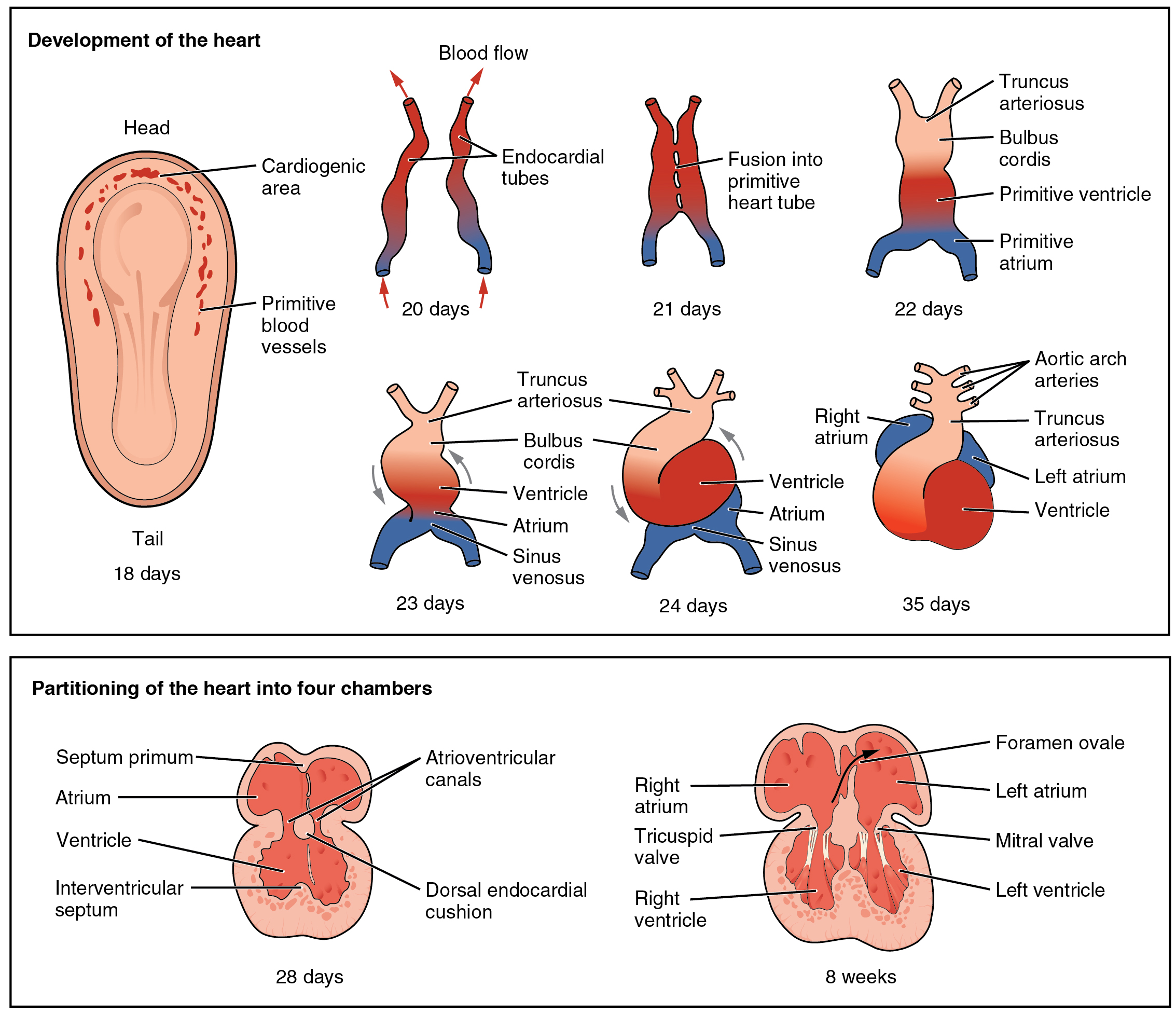Interventricular septum on:
[Wikipedia]
[Google]
[Amazon]
The interventricular septum (IVS, or ventricular septum, or during development septum inferius) is the stout wall separating the ventricles, the lower chambers of the
 The interventricular septum is the stout wall separating the ventricles, the lower chambers of the
The interventricular septum is the stout wall separating the ventricles, the lower chambers of the
File:Heart normal short axis echo.svg, Heart normal short axis echo
heart
The heart is a muscular organ in most animals. This organ pumps blood through the blood vessels of the circulatory system. The pumped blood carries oxygen and nutrients to the body, while carrying metabolic waste such as carbon dioxide to t ...
, from one another.
The ventricular septum is directed obliquely backward to the right and curved with the convexity toward the right ventricle; its margins correspond with the anterior and posterior interventricular sulci. The lower part of the septum, which is the major part, is thick and muscular, and its much smaller upper part is thin and membraneous.
During each cardiac cycle the interventricular septum contracts by shortening longitudinally and becoming thicker.
Structure
 The interventricular septum is the stout wall separating the ventricles, the lower chambers of the
The interventricular septum is the stout wall separating the ventricles, the lower chambers of the heart
The heart is a muscular organ in most animals. This organ pumps blood through the blood vessels of the circulatory system. The pumped blood carries oxygen and nutrients to the body, while carrying metabolic waste such as carbon dioxide to t ...
, from one another.
The ventricular septum is directed obliquely backward to the right and curved with the convexity toward the right ventricle; its margins correspond with the anterior and posterior longitudinal sulci. The greater portion of it is thick and muscular and constitutes the muscular interventricular septum. Its upper and posterior part, which separates the aortic vestibule from the lower part of the right atrium
The atrium ( la, ātrium, , entry hall) is one of two upper chambers in the heart that receives blood from the circulatory system. The blood in the atria is pumped into the heart ventricles through the atrioventricular valves.
There are two at ...
and upper part of the right ventricle, is thin and fibrous, and is termed the membranous ventricular septum.
Blood supply
Theposterior interventricular artery
In the coronary circulation, the posterior interventricular artery (PIV, PIA, or PIVA), most often called the posterior descending artery (PDA), is an artery running in the posterior interventricular sulcus to the apex of the heart where it meets ...
, a branch of right coronary artery
In the blood supply of the heart, the right coronary artery (RCA) is an artery originating above the right cusp of the aortic valve, at the right aortic sinus in the heart. It travels down the right coronary sulcus, towards the crux of the hea ...
, supplies the posterior 1/3 of the interventricular septum. The remaining anterior 2/3 is supplied by the anterior interventricular artery, which is a septal branch of the left anterior descending artery
The left anterior descending artery (also LAD, anterior interventricular branch of left coronary artery, or anterior descending branch) is a branch of the left coronary artery. Blockage of this artery is often called the ''widow-maker infarction' ...
, which is a branch of left coronary artery
The left coronary artery (LCA) is a coronary artery that arises from the aorta above the left cusp of the aortic valve, and feeds blood to the left side of the heart muscle. It is also known as the left main coronary artery (LMCA) and the left ma ...
.
Development
The muscular part of the interventricular septum derives from the bulboventricular flange which is developed due to differential growth of primitive ventricle and bulbous cordis. Membranous part has a neural crest origin which connects the upper free margin of the bulboventricular flange and anterior and posterior endocardial cushions of atrio ventricular canal. It also gets attached to lower border of spiral septum or the aorticopulmonary septum. In the final stages of the heart development, the interatrial septum aligns in the same plane as the interventricular septum. The gap between the interatrial septum and interventricular septum forms the membranous part of interventricular septum.Clinical significance
Aventricular septal defect
A ventricular septal defect (VSD) is a defect in the ventricular septum, the wall dividing the left and right ventricles of the heart. The extent of the opening may vary from pin size to complete absence of the ventricular septum, creating one ...
(VSD), a hole in the interventricular septum is one of the four congenital defects of the condition of tetralogy of Fallot
Tetralogy of Fallot (TOF), formerly known as Steno-Fallot tetralogy, is a congenital heart defect characterized by four specific cardiac defects. Classically, the four defects are:
*pulmonary stenosis, which is narrowing of the exit from the r ...
. A VSD can cause a left-to-right shunt of blood flow in the heart and is one of the most common of the congenital heart defects. This type of shunt is an acyanotic disorder that can result in ventricular hypertrophy.
The alignment of interventricular septum and interatrial septum is disturbed in various congenital heart disease
A congenital heart defect (CHD), also known as a congenital heart anomaly and congenital heart disease, is a defect in the structure of the heart or great vessels that is present at birth. A congenital heart defect is classed as a cardiovascular ...
s.
Additional images
References
External links
* - "Heart and semilunar valve" {{Authority control Embryology of cardiovascular system